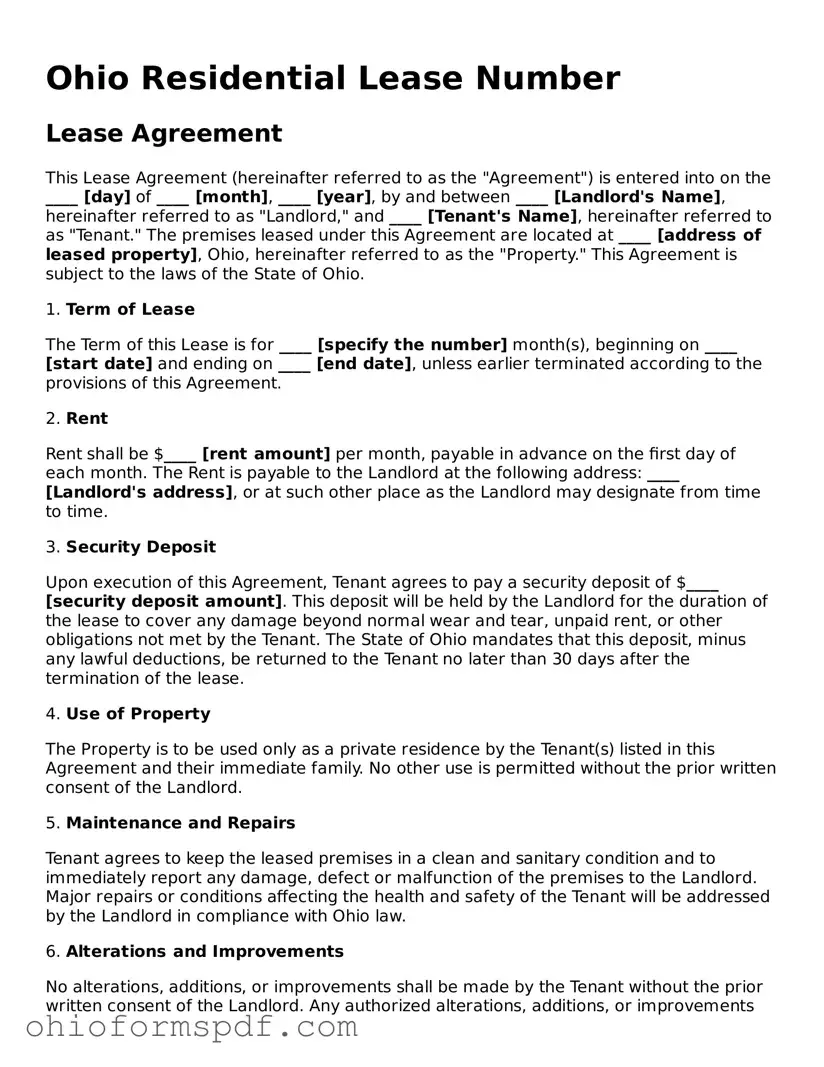What is an Ohio Residential Lease Agreement?
An Ohio Residential Lease Agreement is a legal document that outlines the terms and conditions between a landlord and a tenant for the rental of residential property in Ohio. This agreement specifies the rights and obligations of both parties regarding the rental property, including details on rent, deposits, duration of the lease, and rules regarding the use of the property.
How do I know if my Ohio Residential Lease Agreement is compliant with state laws?
To ensure your Ohio Residential Lease Agreement is compliant with state laws, it should adhere to all Ohio regulations regarding residential leases. This includes providing necessary disclosures, respecting tenants' rights, and including required terms and conditions. It's advisable to consult legal guidance or refer to Ohio's landlord-tenant laws to ensure compliance.
What should be included in an Ohio Residential (lease) Agreement?
Typically, an Ohio Residential Lease Agreement should include information such as the identity of the landlord and tenant, property address, term of the lease, rent amount, security deposit, late fees, and policies on pets, subletting, and termination. It should also outline maintenance responsibilities and utilities payments.
Can I add custom clauses to my Ohio Residential Lease Agreement?
Yes, landlords can add custom clauses to their Ohio Residential Lease Agreements as long as they do not violate state laws or discriminate against tenants. These clauses can cover various aspects not included in standard agreements, but it's important these additions are clear and agreed upon by all parties involved.
How long can a Residential Lease be in Ohio?
In Ohio, residential leases can be of any duration agreed upon by the landlord and tenant. Commonly, leases last for 12 months, but they can be shorter or longer. A lease that is for a longer term than one year must be in writing to be enforceable.
What happens if a tenant breaks a lease early in Ohio?
If a tenant breaks a lease early in Ohio, they may be responsible for the remainder of the rent due under the lease term, unless the landlord is able to re-rent the property. Ohio law requires landlords to make a reasonable effort to find a new tenant as part of their duty to mitigate damages.
Is a security deposit required for a Residential Lease in Ohio?
Ohio law does not require a security deposit for residential leases, but most landlords do require one. If a security deposit is collected, the landlord must follow state laws regarding holding, using, and returning the deposit. This includes providing a detailed list of any deductions from the deposit for repairs or unpaid rent upon lease termination.
Do tenants have a right to withhold rent for repairs in Ohio?
Yes, in certain circumstances, Ohio law permits tenants to withhold rent if the landlord fails to make necessary repairs that affect health and safety. However, there are specific procedures that must be followed before rent can be withheld, including notifying the landlord of the issue and giving them a reasonable amount of time to address it.
Can a landlord enter the rental property without notice in Ohio?
No, Ohio law requires landlords to provide reasonable notice, typically at least 24 hours, before entering a rental property, except in emergencies. The lease agreement can specify the terms of entering for inspections, repairs, or showing the property to prospective tenants or buyers, but it must comply with state law requirements for notice.
What should a tenant do if they plan to not renew their lease in Ohio?
If a tenant decides not to renew their lease in Ohio, they should notify the landlord in writing according to the notice period specified in their lease agreement. If the lease does not specify a notice period, providing notice at least 30 days before the lease ends is generally advisable to comply with Ohio law and avoid any potential penalties.
